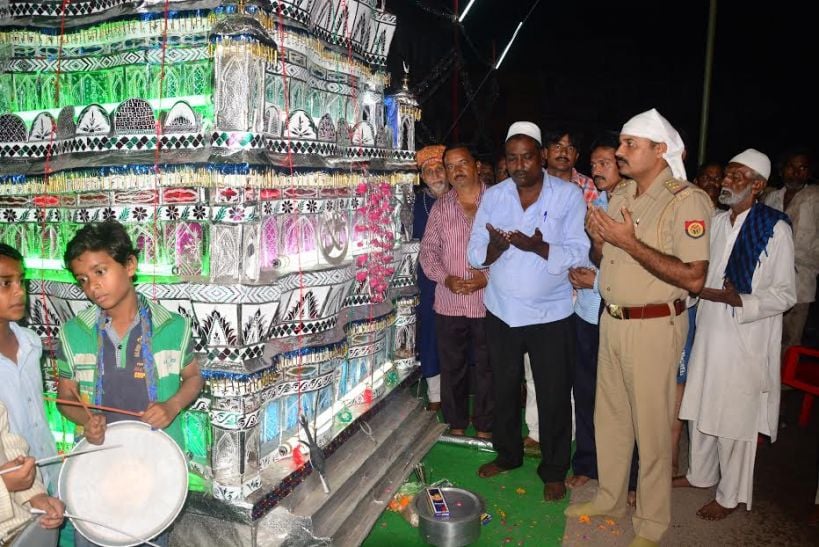Dr.Mazhar Naqvi
Even as the news about the persecution of Hindus
in Pakistan keep featuring in World media at periodical intervals, Taziadari and
participation in Muharram rituals continues to be popular among them with same
zeal and gusto, indicating that they are determined to follow the path shown by
Hazrat Imam Hussain i.e.” raise your voice against tyrant, irrespective of his numeric
superiority and might. Choose honorable death as compared to an oppressed life”.
Before partition, Hindus used to observe
Muharram in large number in undivided India.post 1947, their participation
declines in both Pakistan and India. In Pakistan, it was persecution by fanatics
and attacks on Muharram processions and Sufi shrines that discouraged them while
rise of communalism in India did the same in urban pockets initially and now
threatening their rural counterparts as well. However, despite vehement
opposition of anti- Karbala elements, Taziadari
and Azadari continue to thrive in both the countries. While in India, Muharram
rituals continue to be remaining unaffected in Southern part of the country, the
same applies to Sindh province of Pakistan.
In Karachi, Hindus continue to revere Imam
Hussain as they have been doing for generations. Those living in Hindu pockets
of the commercial capital of Pakistan openly
admit that had always shown respect towards the great sacrifice of Hazrat Imam
Hussain and that they were doing the same even today. They prepare Tazia near their
temple with everyone taking part and helping in Muharram ceremonies. For all of
them, Yaum-e-Ashura is big occasion.
Hindu Tazias of Ranchor Line Karachi
Duldul Tazia of Ranchor Lines in Karachi is
historic. It is integral part of Muharram procession. It is taken out jointly
by Hindus and Sikhs. Sandeep Singh, one of the organizers reveals that Tazia is
taken out as a symbol of fulfillment of a vow by his grandfather. The family
has been in the procession since 1965 after Sandep’s grandfather who was
blessed with children after remaining issueless for considerable time , prompting
him to go for vow before another Tazia dedicated to the sacred memory of Imam
Hussain. Hindu
women cleaning streets for Ashura procession is another unique feature of their
devotion to Imam. The men who make these Tazias have been
doing this for at least three generations from Hindu-dominated Narainpura area.
In
Hyderabad Sindh, One Ashura procession is taken
out by Hindus from the Sheikh Muhalla.
In Peshawar, the Hindu community believes that Muharram
symbolizes inter-religious harmony as
there was no aversion, no instability and everyone would observe it
irrespective of their religion and sectarian differences. The local residents’
recall that participation of Hindus was more about three decades ago but now
tradition is slowly but surely shrinking. They attribute the education system of
Pakistan to the trend. Babaji Guru Gurpal Singh, while reminiscing on the past,
tells that people of all faiths would attend the procession. Now admirers
of Imam Hussain with non-Muslim background they avoid being part of the procession in view of
stringent security measures introduced during Muharram. To keep the tradition alive, Baba has formed a ‘Muttahida Aman Committee’ and its members
visit different Imambargahs and offer their help to the mourners”. The committee
also visits the places and assists those who want to establish Tazia
processions in their areas.
In Pakistan, participation of Hindus in Muharram can still be observed
in areas like Tando Muhammad Khan, Mir Pur Khas, Sanghar, Umer Kot, Tharparkar,
Badin, Thatta and Dadu besides others .Hindu in these areas refrain from
marriage ceremonies during Muharram, wear black clothes as symbol of mourning, distribute ‘Langar’ and even hoist
the Alam to pay tributes to Commander of
small band of Hussaini force, Hazrat Abbas Alamdar. It is nothing less that a
miracle the way Hindus come out on the streets to
observe Muharram in Pakistan- a country marred with sectarian violence.


